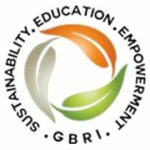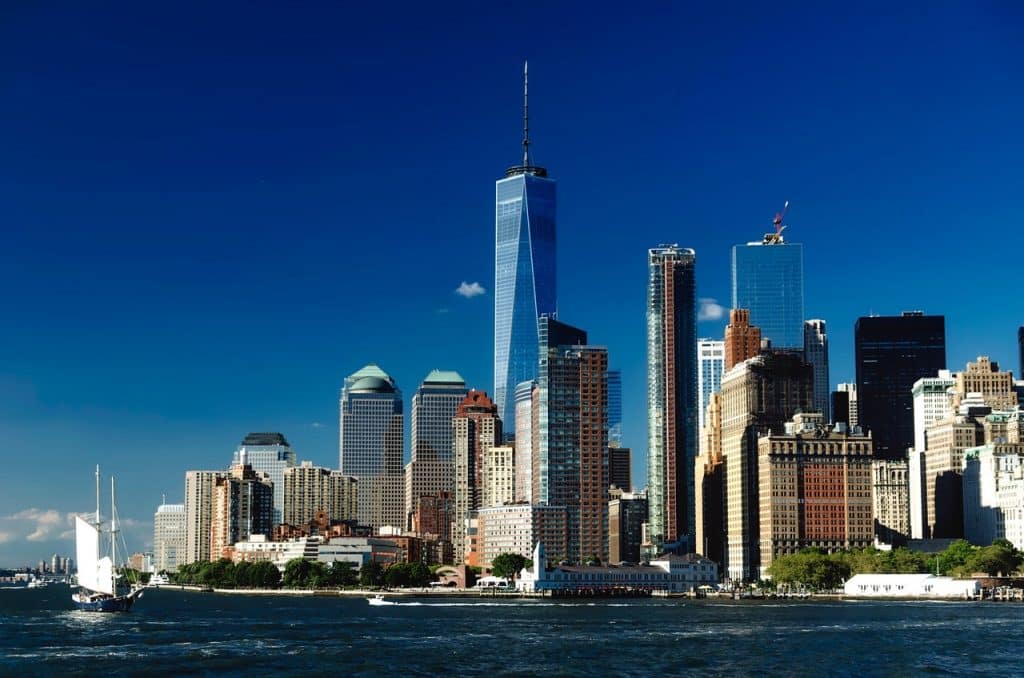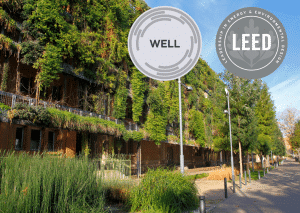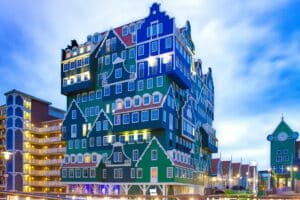Everyone knows today that extreme weather conditions in various parts of the world are the result of climate change and global warming. The National Climate Assessment in the United States has found out that not just the number of heat waves, heavy rainfall, and major hurricanes has increased in the country, the strength of these events has increased considerably too. A measure of the economic impact of extreme weather is the increasing number of billion-dollar disasters.
Extreme weather events are an area of concern when it comes to the built environment and they substantially impact building performance and energy consumption over time. Not many people are aware that even if humanity was to immediately stop releasing carbon dioxide, the climate would continue to change because the greenhouse gases that we have already dumped into the atmosphere could take millennia to dissipate. But that doesn’t mean we can throw up our hands and ignore the problem.
Sadly, there are no guidelines or policies that explicitly address the impacts of climate on energy use in buildings. So, how do we reduce our vulnerability and increase our resilience to this unpredictable operating expense?
Further Read: New Energy Trends for Green Buildings
The key is to design buildings that can cope with the impacts of climate change in the coming decades and are also responsible for minimal greenhouse gas emissions.
What is resilience?
The USGBC defines resilience as “the ability to prepare and plan for, absorb, recover from and more successfully adapt to adverse events.”
It includes-
- Design Planning – Proactive design planning and construction for potential impacts of reasonably expected natural disasters with minimal damage.
- Healthy Site – Creation and execution of a site development plan that promotes healthy vegetation, soils, and aquatic ecosystems to provide ecosystem services such as flood control.
- Maintaining Project Site – Design, building, and maintaining of the project site and adjacent landscapes to reduce risk of wildfire.
- Catastrophic Event – Support for community recovery during catastrophic events and extended bulk power grid outages by enabling islanding and power reliability to essential services.
What is a resilient building?
The Leadership in Energy & Environmental Design (LEED) green building certification program is dedicated to the design of sustainable buildings by incentivizing reductions in energy, water, and building materials consumption, while at the same time enhancing occupant health and overall community connectivity.
While green buildings certified by the program does reduce the environmental footprint of buildings, they must also be designed for resilience to withstand external stressors that may arise over the buildings’ lifetime for it to be truly sustainable. Therefore, a resilient building should be able to adapt and remain functional while under pressure from more frequent and severe climatic events.
The concept of resilience is gaining attention among building professionals as a way to address the risks to building occupants posed by severe storms, droughts and similar climate-related threats. Compared to the related concept of durability, resiliency looks beyond considerations of material strength and design redundancy by asking how building occupants will be protected if and when critical building systems fail.
In other words, resilience addresses what happens when the power goes out, when roads are closed, when building occupants may be isolated from critical support services.
Marius Esterhuyze, the major accounts manager at Autodesk which markets 3-dimensional design software to architects around the world, recently told a reporter for Business Day Live, “Developers need to move away from industrial and commercial construction modeled on ideals. Buildings, manufacturing plants and business parks have to be designed to withstand the infrastructure challenges that face (the world).”
“Good, sustainable building design starts with a clear understanding of the climate of the building site. Building Information Modeling (BIM) allows for data to be captured and displayed through visualization tools that can help to consider factors such as temperature, humidity, wind conditions, and sky conditions in a design,” he added. “The achievement of a net zero energy building should always be the end goal.”
Why is it important for buildings to be resilient?
All buildings, regardless of location, are subjected to the conditions and forces imposed on them from the natural environment. These forces can come from common weather conditions such as sun exposure, wind, rain, snow, hail, and the like. They can also come from other more significant phenomena such as earthquakes, flooding, wildfires, hurricanes, tornadoes, or drought.
Design professionals and building codes can readily address the typical or common concerns of most of these things at least to a basic extent. However, it has become clear in recent years that buildings and entire communities are experiencing situations which aren’t all that typical.
Climate changes and unusual weather patterns have created storm events that are more intense or more frequent than usual. Increased population density has meant that more people are impacted when an event does occur. Older buildings and infrastructure are not always able to deal with these increased conditions and forces. And social, economic, and political conditions in many places around the world are exacerbating the problem through disproportionate impacts on those least equipped to deal with them.
Recognizing the importance of addressing these situations, organizations, government bodies, and individuals are rallying around an emerging planning and design principle—increasing the resilience of buildings and communities for all of their inhabitants.
Difference between sustainability and resiliency
Sustainability focuses on meeting the needs of the present without compromising the ability of future generations to meet their needs. The concept of sustainability is composed of three pillars: economic, environmental, and social—also known informally as profits, planet, and people.
Resiliency, on the other hand, is simply ensuring that the capital base does not fail catastrophically and continues to perform at a net positive rate, even during wild weather events. Climate resilience strategies allow waterfront buildings to flood without damaging major equipment, and to continue operations when the power goes out. Resilience planning allows communities and businesses to bounce back after events.
Add an impressive LEED credential to your resume with GBRI’s #1 LEED v4 Exam Prep material. Register Today! ( Limited time offer! Save 25% now – coupon code LEEDGA25 )
Design principles to follow to make buildings resilient
In order to minimize the impact of changing climate, designers will need to consider:
- Incorporating passive solar design features to reduce the need for heating in winter and air-conditioning in summer
- Designing buildings with more shading in response to increased solar radiation
- Increasing structural design to deal with increased wind loading
- Designing buildings to make more use of natural ventilation
- Designing the roof, roof drainage and storm-water run-off to cope with higher and more intense rainfall
- Incorporating water-saving features in homes to reduce pressure on urban water supplies
- Considering potential flood risk in low-lying areas
- Limiting building in flood-prone areas or coastal regions that are likely to experience increased erosion in the future
Some examples of LEED-certified projects with exemplary resilience
ÁLVAREZ-DÍAZ & VILLALÓN OFFICES, SAN JUAN, PUERTO RICO-
Originally built in the early twentieth century, the building that is home to the offices of Álvarez-Díaz & Villalón (AD&V) was renovated in 2013 to maximize sustainability and resilience. In 2014, the AD&V offices became the first architecture and interior design firm in Latin America to earn LEED Platinum certification. The resilient features of both the office space and the building at large contributed to its quick recovery from Hurricane Maria in 2017.
GAF HEADQUARTERS BUILDING PARSIPPANY, NEW JERSEY-
In 2016, GAF’s headquarters building was the first building in the world to earn a LEED pilot credit for resilient design. North America’s largest roofing manufacturer, GAF ensured that its LEED certified facility in Parsippany, New Jersey would be resilient in the event of an emergency. Previously offered for a limited time (and now being incorporated into the RELi resilience standard in partnership with USGBC), this pilot credit required a pre-design hazard assessment, including identification of and specific assessment requirements for potential natural hazards, such as flooding, tornados, high winds, and earthquakes.
SILVER STAR APARTMENTS LOS ANGELES, CALIFORNIA-
This 49-unit apartment building was completed in 2017, achieving LEED Platinum certification. The development also earned the distinction of being the first Zero Net Energy multi-family affordable housing project in Los Angeles. Silver Star Apartments fully serves veterans with disabilities or those who were previously homeless. The project’s physical resilience and reliability can serve as a consistent, beneficial environment for its residents, as well as contributing to the social resilience of the neighborhood and city.
COLD CLIMATE HOUSING RESEARCH CENTER’S RESEARCH AND TESTING FACILITY FAIRBANKS, ALASKA-
Located on the campus of the University of Alaska Fairbanks, this project is the world’s northernmost LEED Platinum commercial building. The Cold Climate Housing Research Center’s Research and Testing Facility (RTF) building is a living laboratory for building technologies for use in circumpolar regions around the world.
The RTF is resilient to the effects of extreme subarctic temperatures, exhibited by certain features inspired by the LEED certification process like adjustable foundation that enables building to adjust to effects of permafrost, ground source heat pump that transfers energy from the earth for heating purposes, two solar thermal storage systems that are self-regulating and heat water for the building, including during a power outage etc.
Also Read: A Look at the First LEED Buildings
Resilience Rating Tools by USGBC
Through LEED and other programs and initiatives, USGBC promotes and advocates for principles of design, construction, operation, and maintenance that address and emphasize resilience in buildings, landscapes, power systems, and communities. Beyond sustainability, below mentioned green building and infrastructure certifications are driving resilience-enhancing designs, technologies, materials, and methods-
LEED
LEED is the gold standard for how buildings and communities are designed, constructed, maintained, and operated. LEED promotes resilience in each of these areas as well via the LEED Climate Resilience Screening Tool, which evaluates the resilience potential of each LEED credit.
Your one stop shop for all your sustainability education. Buy GBRI exam prep courses!
PEER
PEER is the certification program that measures power system performance and electricity infrastructure, while also working to improve the sustainability, reliability, and resilience of these systems. PEER includes guidance for cities, utilities, campuses, and transit to help ensure reliable delivery of electricity, reduction of emissions, improved safety and security, and more.
SITES
SITES is the sustainable land development and management program that aims, in part, to “create regenerative systems and foster resiliency.” SITES provides a green infrastructure framework for landscapes of virtually any type. Because SITES was modeled after LEED, the system optimizes resilience efforts by enabling some projects to concurrently pursue both certifications.
LEED for Cities
LEED for Cities is a pilot certification program that supports continues progress towards better, more resilient cities. Available through the Arc performance platform, LEED for Cities provides cities with solutions for measuring and managing energy and water use, human experience, waste production, and transportation usage on a city scale.
RELi
The RELi resilience rating system is rising as the new leadership benchmark for resilient buildings and neighborhoods. RELi focuses on resilience by requiring assessment and planning for acute hazards, preparedness to mitigate against them, and designing and constructing for passive survivability.
With inputs from:











